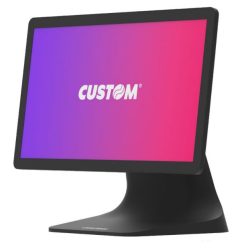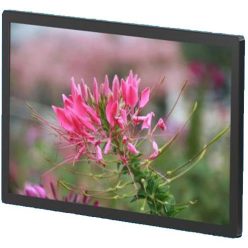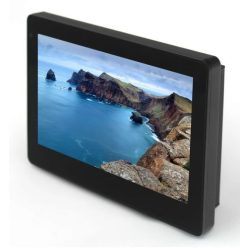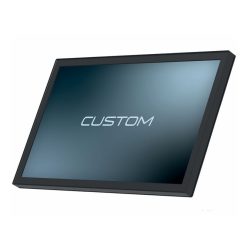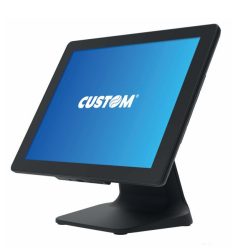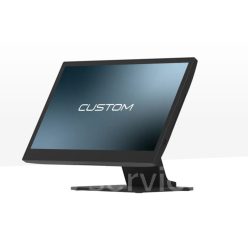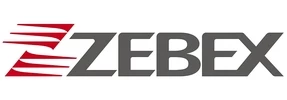Industrial all-in-one PCs with touch display for POS and self-service kiosks
In this all-in-one computer category you will find industrial-grade touch POS PCs and large all-in-one systems designed for 24/7 operation at checkouts and in self-service applications. The portfolio includes solutions from well-known manufacturers such as CUSTOM and SIBO, allowing you to build a consistent, long-term reliable system. Compact 15.6" touch POS PCs fit even on narrow counters and provide an integrated touch user interface and modern processors for front-desk work, while 23.8" PCAP all-in-one models offer high-brightness displays that remain readable in customer-facing areas. The 21.5" industrial all-in-one PC with PoE power and VESA mounting is ideal for wall- or pole-mounted kiosks where tidy cabling and stable, non-stop operation are key requirements.
Industrial all-in-one PCs with touch, PoE and VESA mounting for 24/7 POS and kiosk applications
The all-in-one computer category offers industrial touch PCs where the high-brightness display and the reliable computer are integrated into a single compact housing. The 15.6" desktop POS PCs take up very little counter space, making them ideal for checkout counters, information desks or customer service workstations. The 23.8" PCAP all-in-one systems provide large, easy-to-read screens, so they are a great fit for wall- or stand-mounted price checkers, self-ordering terminals or queue management kiosks. The 21.5" industrial all-in-one PC with PoE power and VESA mounting points enables clean, cable-efficient kiosk installations on walls, poles or custom metalwork enclosures.
Within the range you will find 15.6" touch POS PCs with integrated touch sensors, fanless, industry-optimised processors and high-capacity SSDs; 23.8" all-in-one systems with high-brightness displays, PCAP touch and built-in Wi-Fi for integration into modern wireless networks; as well as 21.5" industrial all-in-one PCs with PoE power, Linux-based operating systems and robust housings for continuous 24/7 duty. With these configurations you can cover everything from front-office cashier workstations to back-office control terminals and fully self-service payment points within a single, coherent hardware platform.
Typical use cases – from checkout to self-service kiosk
Industrial all-in-one PCs are used primarily in retail and hospitality POS systems, self-service kiosks, information points, customer-facing queue management systems and access control solutions. The 15"–16" touch POS PCs provide an ergonomic, all-in-one user interface at the checkout, while the 21.5"–23.8" systems are well suited for wall- or stand-mounted kiosks operated directly by customers. Different CPU and memory options allow you to scale from simple cashier stations through to complex self-service terminals running multiple applications and rich user interfaces.
Integrated touchscreens support capacitive multi-touch (PCAP), which offers a fast, intuitive user experience, while the industrial housing and lockable base or VESA mounting ensure stable, vandal-resistant installations. With PoE-enabled models, both power and data can be supplied over a single Ethernet cable, minimising cable clutter and making it easy to connect systems to a central UPS for power backup and controlled shutdown.
Technology benefits – compact design and integrated POS functions
One of the main advantages of all-in-one PCs is their compact design: the display, computer and often the speakers are housed in a single unit, so they take up less space than separate desktop and monitor combinations, which is crucial at cramped checkout counters. Many all-in-one touch POS systems are designed to handle the POS application, stock control and customer display from the same device, which reduces the number of boxes you need to install and simplifies support and lifecycle management. citeturn2search1turn2search2turn2search8
The integrated touchscreen speeds up customer handling, reduces the chance of input errors and makes it easier to train new staff. In an all-in-one POS environment, sales, inventory, reporting and often customer data management are combined into a single platform, providing real-time visibility and better decision support. Industrial-grade models add durable components, fanless cooling and electronics designed for continuous 24/7 use, so they can operate reliably for years under constant load, even in environments with dust and temperature fluctuations.
Drawbacks – expansion, serviceability and cost
On the downside, all-in-one PCs are typically less upgradeable than classic desktop + monitor setups. The CPU, graphics subsystem and display are usually integrated parts of the device, so when a component becomes obsolete or fails it may be harder and more expensive to replace – in some cases you have to swap the entire unit. A modular desktop PC with similar performance can often be cheaper, but it will take up more space and require more complex cabling. citeturn2news20turn2search7
Repairing all-in-one POS systems also tends to require more specialised service skills, which is why it is so important to choose a supplier that can provide local service capability and spare part support. In return, your day-to-day operations become simpler: there is a single device to manage, with a unified driver and software environment, which typically results in fewer configuration issues overall.
Quality, local service, maintenance and financing
The industrial all-in-one PCs in this category are backed by a team with more than 25 years of experience in self-service systems. A local service centre in Budapest, together with local and European stock, helps ensure that key configurations are available with short lead times and that you have a partner to turn to in case of failures. Project-based, scheduled deliveries make it possible to synchronise larger rollouts of all-in-one POS systems with your own production or deployment schedule, reducing the amount of capital tied up in inventory. citeturn0search3turn0search6turn0search13
Flexible commercial terms can include project-specific quotations, delivery from stock or via advance orders, multiple shipping and customs handling options, post-delivery payment terms and invoicing in local or foreign currencies (HUF/EUR). Regular maintenance – such as cleaning cooling surfaces, checking connectors and planning software updates – helps ensure that all-in-one POS systems remain stable and secure over the long term, so a single device failure does not bring down an entire checkout line or self-service area.
FAQ – all-in-one POS and industrial touch PCs
How is an industrial all-in-one POS different from a standard PC and monitor?
An industrial all-in-one integrates the display and computer in a single touch-enabled enclosure that is purpose-built for POS and kiosk use. It is designed for continuous duty, temperature variations and dust, but is usually less modular and upgradeable than a traditional desktop setup.
What are the main benefits of using a touch all-in-one at the checkout?
A touch all-in-one POS simplifies the user interface, speeds up transactions and reduces the number of peripherals required. POS software, stock management and reporting can all be accessed from a single screen, which reduces errors and shortens staff training time.
Why are PoE and VESA mounting important for all-in-one systems?
PoE allows both power and network connectivity over a single Ethernet cable, simplifying installation and making it easy to connect the system to a central UPS. VESA mounting provides a stable, standardised fixing method on walls, poles or kiosk structures for secure, professional installations.
What do industrial all-in-one PCs offer that consumer devices typically lack?
Industrial all-in-one PCs are engineered for 24/7 operation, long-term availability of spare parts and support for specific operating conditions. They can be ordered with specialised I/O, industrial mounting options, extended product lifecycle and local service backing – capabilities that are usually missing from consumer-grade PCs.

